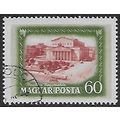Staffa, Inner Hebrides - Island Blue postcard
- Condition : Used
- Dispatch : 2 Days
- Brand : None
- ID# : 182546751
- Quantity : 1 item
- Views : 189
- Location : United Kingdom

- Seller : justthebook (+1712)
- Barcode : None
- Start : Wed 12 Jun 2019 09:28:06 (BST)
- Close : Run Until Sold
- Remain : Run Until Sold
More Listings from This Seller view all
Seller's Description
- Postcard
- Picture / Image: Isle of Staffa
- Publisher: Island Blue / photo Martin Guppy
- Postally used: no
- Stamp: n/a
- Postmark(s): n/a
- Sent to: n/a
- Notes / condition:
Please ask if you need any other information and I will do the best I can to answer.
Image may be low res for illustrative purposes - if you need a higher definition image then please contact me and I may be able to send one. No cards have been trimmed (unless stated).
------------------------------------------------
Postage & Packing:
Postage and packing charge should be showing for your location (contact if not sure).
No additional charges for more than one postcard. You can buy as many postcards from me as you like and you will just pay the fee above once. Please wait for combined invoice. (If buying postcards with other things such as books, please contact or wait for invoice before paying).
Payment Methods:
UK - PayPal, Cheque (from UK bank) or postal order
Outside UK: PayPal ONLY (unless otherwise stated) please. NO non-UK currency checks or money orders (sorry).
NOTE: All postcards are sent in brand new stiffened envelopes which I have bought for the task. These are specially made to protect postcards and you may be able to re-use them. In addition there are other costs to sending so the above charge is not just for the stamp!
I will give a full refund if you are not fully satisfied with the postcard.
----------------------------------------------
Text from the free encyclopedia WIKIPEDIA may appear below to give a little background information (internal links may not work) :
*************
Staffa (Scottish Gaelic: Stafa,[4][5] pronounced [s̪t̪afa]) from the Old Norse for stave or pillar island, is an island of the Inner Hebrides in Argyll and Bute, Scotland. The Vikings gave it this name as its columnar basalt reminded them of their houses, which were built from vertically placed tree-logs.[6]
Staffa lies about 10 kilometres (6 mi) west of the Isle of Mull. The area is 33 hectares (82 acres)[7] and the highest point is 42 metres (138 ft) above sea level.
The island came to prominence in the late 18th century after a visit by Sir Joseph Banks. He and his fellow-travellers extolled the natural beauty of the basalt columns in general and of the island's main sea cavern, which Banks renamed 'Fingal's Cave'. Their visit was followed by those of many other prominent personalities throughout the next two centuries, including Queen Victoria and Felix Mendelssohn. The latter's Hebrides Overture brought further fame to the island, which was by then uninhabited. It is now in the care of the National Trust for Scotland.[8]
In prehistoric times Staffa was covered by the ice sheets which spread from Scotland out into the Atlantic Ocean beyond the Outer Hebrides. After the last retreat of the ice around 20,000 years ago, sea levels were up to 125 metres (410 ft) lower than at present. Although the isostatic rise of land makes estimating post-glacial coastlines a complex task, around 14,000 years ago it is likely that Staffa was part of a larger island, just off the coast of mainland Scotland, which would have included what are now Mull, Iona and the Treshnish Isles.[9]
Steadily rising sea levels then further isolated this little island, which is entirely of volcanic origin. It consists of a basement of tuff, underneath colonnades of a black fine-grained Tertiarybasalt, overlying which is a third layer of basaltic lava without a crystalline structure. By contrast, slow cooling of the second layer of basalt resulted in an extraordinary pattern of predominantly hexagonal columns which form the faces and walls of the principal caves.[2] The lava contracted towards each of a series of equally spaced centres as it cooled and solidified into prismatic columns, a process known as columnar jointing. The columns typically have three to eight sides, six being most common. The columns are also divided horizontally by cross joints.[10] These columnar jointed sections represent the tops and bottoms of individual lava flows. Between these sections lie regions of much more chaotic jointing, known as the entablature. The origin of the entablature is unknown, but could be due to flooding of the lava flow, causing much more rapid cooling, or the interaction of stress fields from the two regions of columnar jointing as they approach one another.[11]
Similar formations are found at the Giant's Causeway in Northern Ireland, on the island of Ulva and at Ardmeanach on the Isle of Mull.[8] Grooves in the roof of MacKinnon's cave indicate either a pyroclastic flow or a series of eroded ash falls in the rock above the columnar basalt.[12] The 'Staffa Group' is the name given to the series of olivine tholeiite basalts found in the vicinity of Mull which erupted 55–58 million years ago.[13]
Listing Information
| Listing Type | Gallery Listing |
| Listing ID# | 182546751 |
| Start Time | Wed 12 Jun 2019 09:28:06 (BST) |
| Close Time | Run Until Sold |
| Starting Bid | Fixed Price (no bidding) |
| Item Condition | Used |
| Bids | 0 |
| Views | 189 |
| Dispatch Time | 2 Days |
| Quantity | 1 |
| Location | United Kingdom |
| Auto Extend | No |




 for 1 item(s)
for 1 item(s)
















